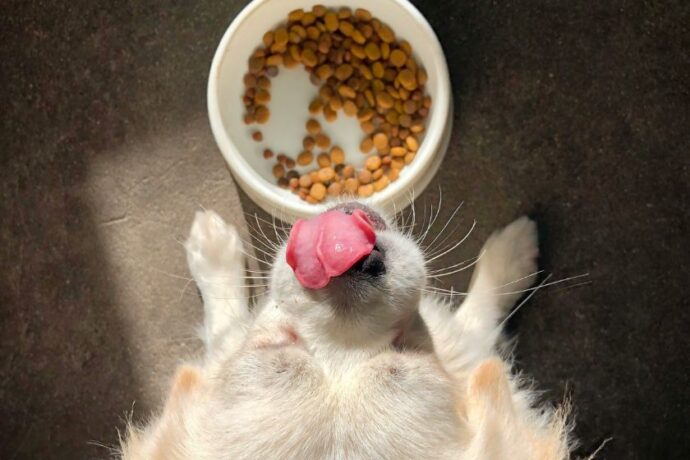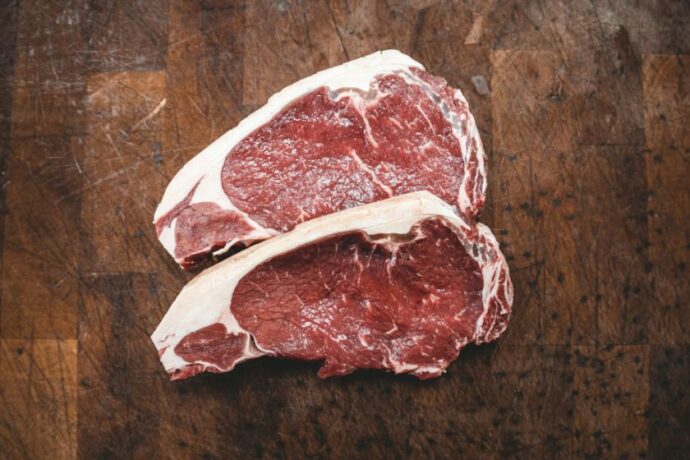
When it comes to your beloved pet’s nutrition, it’s not just about sticking to traditional dog food; it’s about enhancing their diet with uncommon, rare healthy foods to boost their wellbeing. Our furry friends can benefit greatly from a diverse range of nutrients found in foods we don’t typically consider dog fare. We’ll dive into superfoods in your kitchen and other unusual but healthy treats for dogs. It’s time to think outside the kibble box and explore those under-the-radar superfoods that pack a nutritional punch for your pooch. Moving beyond the standard dog treat or meal, adding these uncommon healthy foods to feed your dog can create a flavorful and nourishing experience for them.
Chia Seeds
Chia seeds, often deemed a modern-day superfood, have a rightful place in your dog’s diet too. They are packed with essential nutrients such as omega-3 fatty acids, fiber, and protein, beneficial for maintaining your dog’s overall health. They also help in improving skin and coat condition due to their anti-inflammatory properties, leading to fewer itchy patches and a shinier fur. Additionally, chia seeds also have high fiber content that aids in digestive health, promoting regular bowel movements and preventing issues such as constipation in dogs. These are pretty easy to incorporate into your dog’s diet as they can be sprinkled over regular food or added to homemade treats for a nutritious boost.
Ways to introduce these to your dog:
- Sprinkle a teaspoon of chia seeds onto your dog’s meals.
- Mix them into homemade doggy biscuits.
- Soak chia seeds in water to create a gel, then mix with your dog’s food for enhanced hydration.

Anchovies and Sardines
Anchovies and sardines are not just a pizza topping or a Caesar salad garnish—they’re nutritional powerhouses for your canine companion. Rich in omega-3 fatty acids, anchovies and sardines promote a healthy coat and skin for dogs, reducing inflammation. These tiny fish are a safer option, reducing the risk of mercury poisoning often associated with larger fish species. High in protein, anchovies and sardines support lean muscle development and can be an excellent dietary addition for dogs’ energy and growth needs. These fish contain essential nutrients such as calcium, iron, and vitamin B12, which contribute to bone health, blood cell formation, and maintaining a robust nervous system in dogs. These are super easy to incorporate into a dog’s diet and can be served as occasional treats or mixed in with regular food.
Ways to introduce these to your dog:
- Mix a few anchovies or sardines into your dog’s bowl during mealtime.
- Use them as a high-value training treat (humans, you may want to wear gloves)—most dogs love the taste.
- Serve them alongside other foods for added flavor and nutritional enrichment.
Raw Goat Milk
Raw goat milk is packed with essential nutrients, vitamins, and enzymes beneficial to dogs, including vitamin A and B complex. It contains probiotics and fatty acids that support a healthy digestive system and improve gut health. The milk’s alkaline properties can help neutralize stomach acid and ease gastrointestinal discomfort. Goat milk also serves as a hydrating food supplement, especially for dogs that might not be the best water drinkers out there. Incorporating raw goat milk into a dog’s diet can aid in enhancing immune function, reducing allergies, and promoting vibrant skin and coat health.
Ways to introduce these to your dog:
- Pour a splash of raw goat milk over your dog’s kibble to encourage hydration.
- Offer a small bowl as a treat or to entice a picky eater.
- Freeze raw goat milk in ice cube trays for a refreshing and nutritious summer treat.
Bone Broth
Moving onto a warm and comforting addition to your dog’s diet: bone broth. This nutrient-rich liquid is as beneficial for your pooch as it is for us humans.
Bone broth is a nutrient-packed liquid made from simmering animal bones and connective tissues, offering a rich source of minerals and vitamins that support canine health. It aids in digestion and can help soothe your dog’s gut, due to the gelatin that forms from long-cooking bones, making it a great food for pets with sensitive stomachs.
Bone broth contains glucosamine, chondroitin, and other compounds that contribute to joint health, making it especially beneficial for older dogs or breeds prone to joint issues.
The broth can be used to hydrate dry kibble, adding a tasty flavor that encourages dogs with low appetite to eat while providing hydration. Bone broth is easy to make at home or can be purchased pre-made; it should be free from harmful additives such as onions, garlic, and excessive salt to ensure it’s safe for your dog.
Ways to introduce these to your dog:
- Use bone broth to moisten dry food, making mealtimes more appealing.
- Serve cooled bone broth as a nourishing drink alongside your dog’s main meals.
- Freeze bone broth into popsicles for a nutrient-rich summer treat.
Organ Meats
If you’re looking to mirror a canine’s natural diet, don’t overlook the incredible nutritional value of organ meats. Organ meats, such as liver and kidney, are nutrient-dense superfoods for dogs, offering high levels of essential vitamins and minerals. These meats provide a rich source of vitamin A, B vitamins, iron, and trace minerals that promote healthy organ function and boost the immune system. Feeding dogs organ meats can support their coat and skin health due to the high-quality protein and omega fatty acids present. It’s important to serve organ meats in moderation as part of a balanced diet, to prevent vitamin A toxicity and ensure overall nutritional adequacy.
Incorporating a variety of organ meats can help mimic a natural canine diet, offering a depth of flavors and nutrients often missing from conventional commercial dog foods.
Ways to introduce these to your dog:
- Add small pieces of liver to your dog’s meals for a nutrient boost.
- Serve dehydrated kidney as a crunchy snack.
- Rotate different organ meats to provide a spectrum of nutrients.
- Offering organ meats as a part of your dog’s diet brings a rich diversity of nutrients to the table, mimicking the holistic nutrition they would receive in the wild.
Bringing It All Together
By embracing these uncommon healthy foods to feed your dog, you’re setting the stage for a happier, healthier best friend. The variety and nutritional quality of these superfoods can lead to noticeable improvements in their energy, appearance, and even behavior. The wealth of benefits ranges from enhanced immune function and gut health to improved skin and coat, and even better joint mobility.
So, next time you’re prepping your shopping list or looking for ways to spruce up your dog’s meals, consider adding these healthful, less-typical treats into the mix. You’ll be surprised at how much your dog enjoys these nutrient-rich additions, and you’ll take comfort in knowing you’re providing the best for their well-being. It’s a win-win for the most cherished companion in your life.



